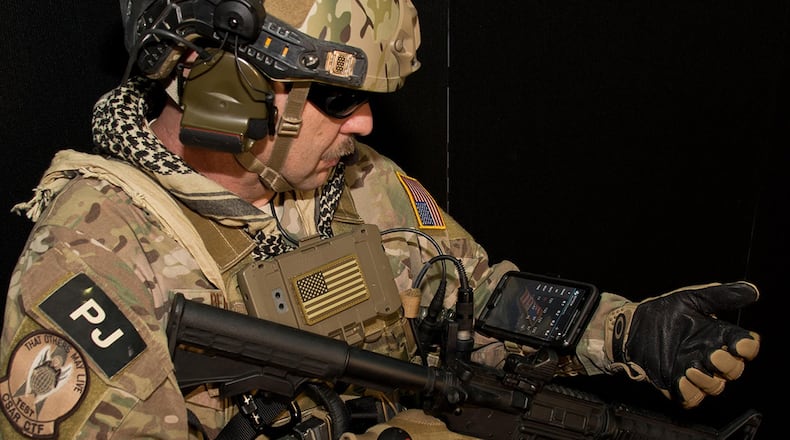The integrated development process was critical to making BATDOK a tool that seamlessly integrates mobile capabilities for Airmen in the field, said Dr. Gregory Burnett, from the 711th Human Performance Wing’s Airman Systems Directorate in the Warfighter Interface Division. Burnett managed the development of BATDOK for the Air Force.
“BATDOK is a multi-patient, point of injury, casualty tool that assists our human operators and improves care,” said Burnett. “It can be a real-time health status monitoring for multiple patients, a documentation tool, a user-definable medical library, a portal to integrate patient data into their electronic health records, and finally it is interoperable with battlefield digital situation awareness maps, which helps identify the exact location of casualties.”
Burnett’s background in computer engineering, with an emphasis in embedded electronics and mobile interfaces helped the Air Force Research Laboratory development team design the look and feel of BATDOK. However, more intimate knowledge was needed for the tool to be most useful for operators in the field.
“We physically left the lab, got into the field with the operators, and observed firsthand the challenges and deficiencies they face,” said Burnett. “And when I say into the field, I mean we literally rode in the helicopters into hot landing zones, and observed medical Airmen stabilize and package up patients for transport and load them back on the helicopter.
“We see, at the point of injury, the challenges and limitations that our medical Airmen face. With those lessons learned, and gaps identified through direct experience, we come back to the lab and devise innovative solutions to address the short falls we observed firsthand in the field.”
The integration didn’t stop once the BATDOK development team got back to their lab. They continued to interact with operators from their deployment, and got feedback throughout the process.
“From day one, every interface, every button, every menu, was user-validated by pararescue Airmen and combat rescue officers that were involved in the design, integration and testing process,” said Burnett. “Nothing is added without the explicit request and review by the operator.”
This brings firsthand knowledge to the development process. The development team and operators sit down and walk through the mission step-by-step. They identify areas where current technology can be improved, or where a gap exists, and then share ideas to innovate new solutions and capabilities.
This process helps the team identify requirements and avoid unforeseen downsides to new technology. Medical Airmen deploy with heavy loads, and can be cautious about adding new gear. Working so closely with the operator helped the team integrate BATDOK into the tactical ensemble.
“BATDOK was designed to not add any additional burden to battlefield Airmen’s tactical ensemble,” said Burnett. “From the beginning, we are designing to enhance capabilities, while aiding their survivability and lethality. Being part of the Air Force gives us flexibility and firsthand, unfiltered access to operators and perspective on the challenges that Airmen face. This is true for both humanitarian and combat missions. Being able to observe in person is invaluable and helps us contribute to the overall readiness mission.”
About the Author
